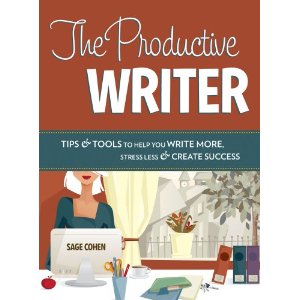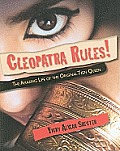Today’s guest post is from Sage Cohen, whose book, The Productive Writer, offers advice for writers of all types to help them get more out of their writing. Here, Cohen shares one of her tips from the book.
 Practice Deliberately (And Hit Your Target)
Practice Deliberately (And Hit Your Target)
A guest post by author Sage Cohen
“The best people in any field are those who devote the most hours to what the researchers call ‘deliberate practice.’ It’s activity that’s explicitly intended to improve performance, that reaches for objectives just beyond one’s level of competence, provides feedback on results and involves high levels of repetition.
For example: Simply hitting a bucket of balls is not deliberate practice, which is why most golfers don’t get better. Hitting an eight-iron three hundred times with a goal of leaving the ball within 20 feet of the pin 80 percent of the time, continually observing results and making appropriate adjustments, and doing that for hours every day—that’s deliberate practice.”—Geoffrey Colvin, senior editor-at-large, Fortune Magazine
Have you ever gotten halfway through a piece of writing and found yourself floundering about what you were actually trying to accomplish in the first place? This is where the concept of deliberate practice comes in. When you set your sights on specific goals for a piece of writing, then you’ll know exactly how close you come to achieving your goal.
Try writing out as many of these details at the top of your piece, or on a Post-It note that you attach to your computer screen or your working file folder. For example, I wrote this at the top of a recent piece I’d been contracted to write:
- Target word count: 1,500
- To appear in: Poet’s Market 2012
- Audience: Aspiring poets with varying levels of publishing experience
- Topic: Why Poets Need Platforms and How to Create One
I challenge you to name and claim the key objectives of every piece of writing, even a blog post, short story, essay, or poem, regardless of whether you’ve been hired to write it or if you ever intend to share it. Here are a few tips to get you started:
1. Choose a listener
When you know the audience you are writing for, you can start to imagine their needs, questions, objections, and level of interest. The simplest way to define this audience is by choosing a single person who is representative of this group, and write it “for them.” Maybe this person can even be available to read and give feedback about your work, to help you learn if it was received as you intended.
2. Name the objective of what you are writing
If you are writing on assignment or for a client, this is where you’d articulate exactly what goals you’ve been hired to accomplish. If you are writing something for a themed contest or publication, define the topic or parameters within which you must perform. And if you are writing creative nonfiction, poetry, or fiction that is not driven by particular submission requirements, try setting your own standard for what you expect this piece to do/be/accomplish and then observe if this makes a difference in your writing and revising experience.
3. Write! You know everything you need to know about this, already! [This is the sound of me shaking my pom-poms.]
4. Revise!
Anyone who’s ever spent years revising a single piece of writing knows all too well what hitting an eight-iron three hundred times might be like. Now, get out there and start swinging.
5. Evaluate whether you have achieved your objective
When your piece feels finished, revisit the goals articulated in numbers one and two, and see how your writing measures up. If there are discrepancies, return to number four, and then repeat. If you didn’t hit the mark the first time, don’t worry. Remember, this is all practice. And the only way we improve is through repetition. Practice shapes us, so we can most effectively give shape to our writing.
[Excerpted from The Productive Writer by Sage Cohen]
About Sage Cohen
Sage Cohen is the author of The Productive Writer (just released from Writer’s Digest Books); Writing the Life Poetic and the poetry collection Like the Heart, the World. She blogs about all that is possible in the writing life at pathofpossibility.com, where you can: Download a FREE “Productivity Power Tools” workbook companion to The Productive Writer. Get the FREE, 10-week email series, “10 Ways to Boost Writing Productivity” when you sign up to receive email updates. Sign up for the FREE, Writing the Life Poetic e-zine. Plus, check out the events page for the latest free teleclasses, scholarships and more.








